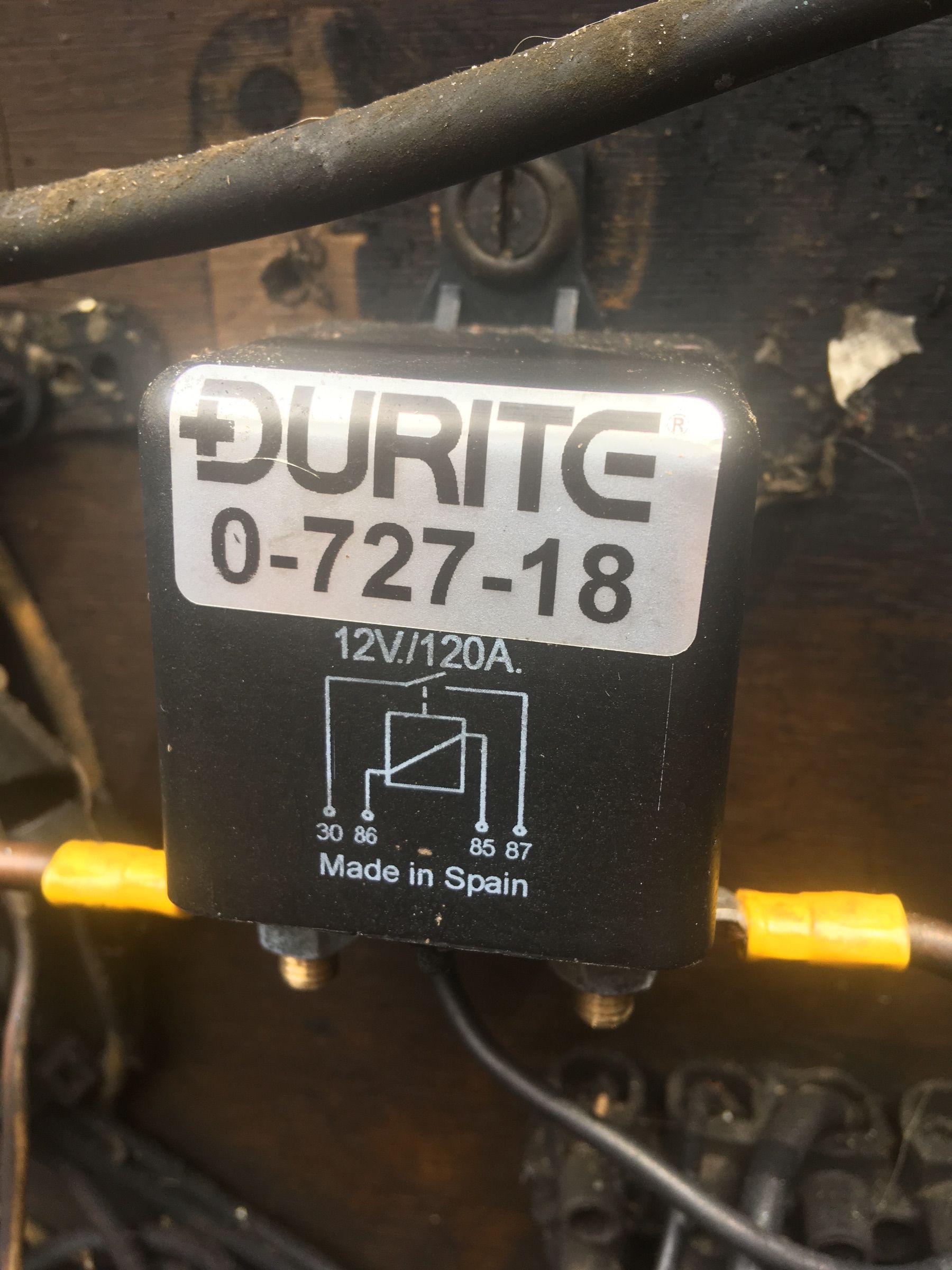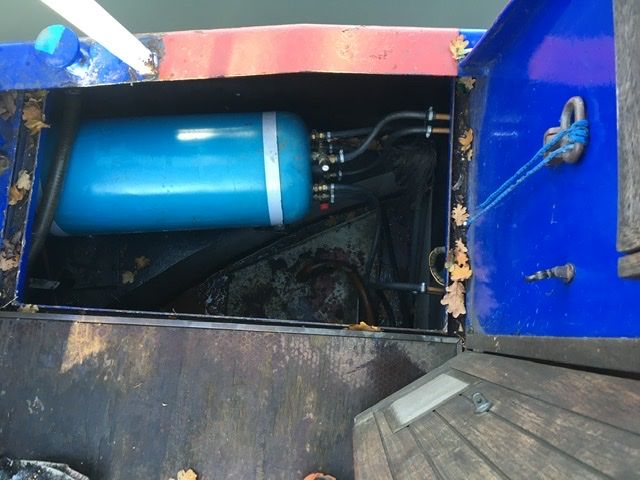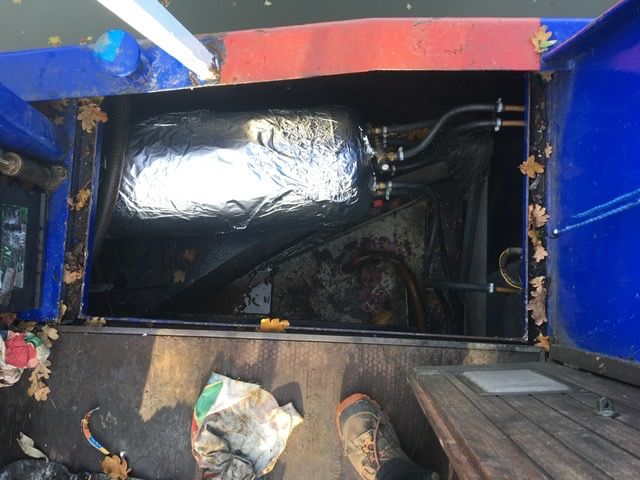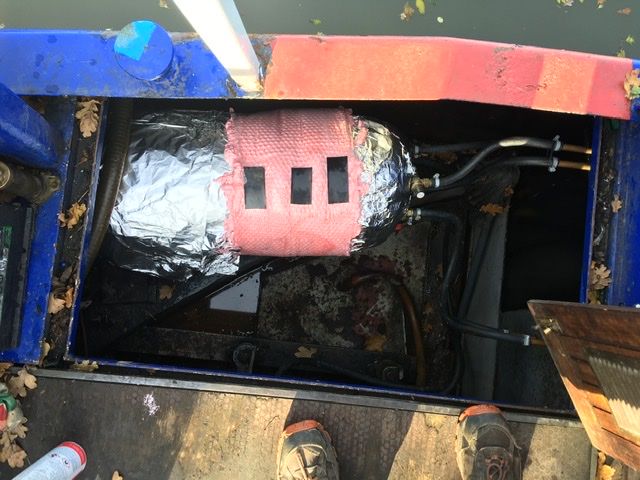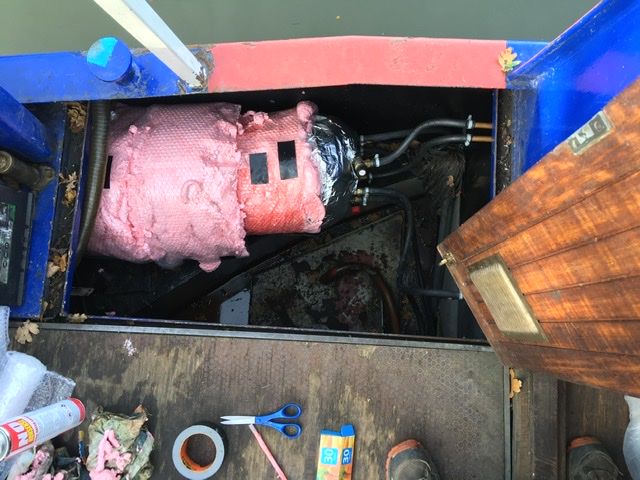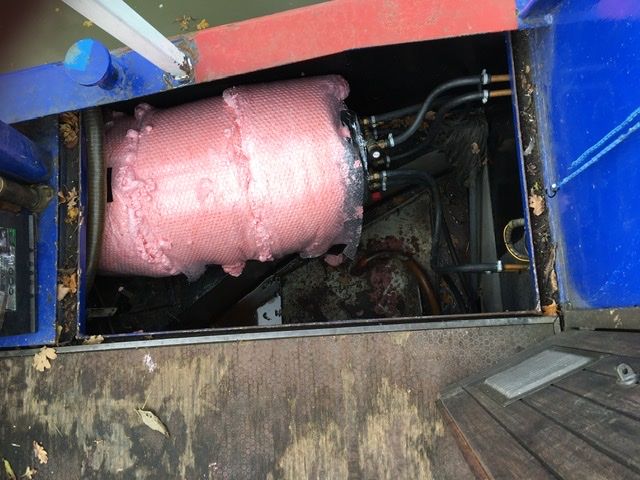

Strettonman
Member-
Posts
82 -
Joined
-
Last visited
Content Type
Profiles
Forums
Events
Gallery
Blogs
Store
Everything posted by Strettonman
-
Thanks everyone for the comments. It looks like I’m ditching the folding anchor, putting on a decent length of chain, getting 20-30m of a strong stretchy rope and checking whether my T-studs are up to the job. This was just the type of advice I was looking for to thanks again.
-
I've got a 40ft narrowboat and looking to start boating on the river part of the network. I can't find a clear guideline for rope type, diameter, length, end loops etc for my anchor so can anyone help. Also the boat came with a large 4 claw folding anchor so is this appropriate ? Cheers
-
As I said, I’ve not done my research yet so what’s the pros and cons of wiring them in series or parallel ?
-
That’s good to hear. Thanks all. If they look in good nick and will fit my roof I think I’ll go for them. Is £70 a pop about right for decent second hand panels ?
-
I’ve not done any research into PVs yet but I am keen to get them on the boat in the next 6 months and someone has just offered me a couple of 36v 250W PV panels. I’ll obviously get an MPPT controller but will I need something special and are these types of panels a good idea for the boat ? ive not seen them yet and have no other info but I suspect they are home PV panels. any advice ? thanks.
-
Ok. Thanks. I’ll check the relay but it sounds like if the alternator is not worth repairing it’s a new one and possibly look at a 70 amp Lucas A127 clone and ditch the kestrel controller. regarding the cable size the current cable between the alternator and starter is roughly the same as the battery to starter so I guess that means it will be fine as an alternator surely will not output more current than is drawn when cranking.
-
Back on the case. it all got a little nasty last night. She dropped right through the deck and was stopped when her stomach hit the deck support bar (now badly bruised) . She then proceeded to faint while I was trying to help her. On the upside it gave me a good excuse to slap her around the chops. There was no evidence of it but she must have bashed her head as for the first time every she admitted it was her fault entirely !!! Stepping across deck support bars in flip flops was never going to end well. back to the important subject of the alternator. nick - yes, with D+ connected , relay disconnected and engine running fast the warning light is on. Tony - I’ve then disconnected the D+, started the engine, put it on decent revs and brushed a lead connected to the battery over it. No jump up in voltage (sitting at about 12.5V). no signs of melting relay housing. I’ve attached a photo of the relay. It sounds like I need to get the alternator off for test and repair or replace. Is repair a cost effective option and any idea where to take it. I’m on GU Leicester arm near foxton.
-
Chaps, sorry but got to halt my investigation. The missus has just fallen into the engine bay of our cruiser back with the deck up so I’ve got to divert my attention in order to save my marriage. I’ll try to get my head round your comments later. thanks.
-
Thanks chaps. an idiots guide to charging would be great. I’ll be very happy if it is just the relay. With both relay and D+ connected IGN on and engine NOT running light is on. When I disconnected the relay the light us still in but slightly dimmer. If I start the engine with some revs do the alternator is spinning quite fast the light is still on. does this all still point to the relay. I had some work done a few months back and a couple of days before the engineer arrived I had a charging problem. He diagnosed a relay and swapped it for one he had in the van. Are all relays essentially the same or do you need to be careful which one you fit ?
-
Hi tony, I think I need a little education on alternators here. I disconnected the small spade connectors at the back of the alternator and the charge light stayed on and still the voltage at the +ve starter terminal (to which the main alternator lead is connected) was at 12.6V. i then disconnected the lead on the split charge relay ( DURITE 0-727-18) that I am pretty sure is a T off the lead between the small spade connector and the warming light. The light went out. Does this suggest a fault in the relay ? I only had it replaced a few months ago. One area of education I need is when an alternator delivers its charge voltage. I thought that they pumped our 14+V all the time. When it works normally mine seems to put out 14.5V. if the short is in the ‘measuring/control’ circuit to the relay and warming light how does that prevent the alternator delivering 14+V . also what voltage levels should I see on the small spade connector on the alternator ? cheers
-
Thanks Tony, I’ll have a look at this tomorrow. Not sure what split charger it has but will take a look. cheers
-
I’ve got a 1.5.BMC and it looks like there is no output from the alternator (lead to starter is siting at 12.6V) and charge light on. Firstly is there anything else I should check or is it a knackered alternator ? assuming it does need replacing I’m wondering what the best approach should be. I’ve got acorn kestrel 90 alternator controller which was clearly fitted when the boat was built in the early 80s and I’ve been told these are next to useless. I plan to get a couple of PV panels in the next 12 months and plan keep the boat all 12v (perhaps a small inverter for very occasional use). I could do without shelling out loads of cash right now to do the whole lot in one go but have you got any advice as to what I should do with the alternator ? btw, I run the engine for 30-45 mins every day to heat the calorifier but I’m hoping that this along with the PVs should give be enough charge so considering whether a higher output alternator might be worth investing in.
-
Not sure anyone is really interested but here is my attempt so far. I lined the foam covered calorifier with tin foil and then built up 2 sections of slight loose bubble wrap and injected fire retardant foam to create about a 1” layer. Once (sort of) set I put on 3 sections of very loose bubble wrap to create a second layer another couple of inches thick. I’d ordered 1m wide bubble wrap but it was out of stock so they gave me several 30cm wide rolls. This was actually better for getting the foam in. the only problem is it is taking days for the foam to set as the air can’t get to it. next step will be cover it with foil backed laminate underlay and then sort the plumbing end and lag the inlet and outlet pipes. I’ll certainly be shutting off and opening taps as a matter of routine over the winter and may even do a partial drain down if i need to leave it when it is really cold.
-
That’s excellent - thanks everyone. It looks like I’ll be spending this evening on eBay. cheers.
-
I’ve currently got an unlimited data package sim in an old smartphone used as a hotspot when we’re onboard. The signal is often ‘patchy’ so I am wondering whether a proper mobile router would be a better solution. I’ve currently only got 12v power so I guess I’ll need the right lead/converter if I use a router designed for the home. Also are there any tips on getting the best signal (router location, additional external antenna ....)
-
The calorifier is in the engine bay of a cruiser deck so I little exposed. I am in the middle of rethinking the layout and may put the kitchen at the back so could quite easily move the calorifier inside but I suspect this might end up being next spring.
-
This is great stuff all - thanks. Sorry for a late response - a common boating problem (or joy?) - lack of signal. I’ve routed the pipes to the engine that seem to prevent siphoning and I’ve also got a manual valve to shut it off if need be. While I want to maintain heat over night my main concern is freezing in the winter. We live aboard part time normally 3 days most weeks so my main concern is to minimise the risk of damage between visits and not have to drain down the system every time I think there is going to be a cold spell. obviously if the forecast is sub zero for weeks I might have to drain down but want to avoid this as much as possible. The bubble wrap and foam idea sounds interesting. As space is at a premium have you any idea how efficient this is compared with just foam for say a 2” covering. I think maybe a final wrap of foil backed matting might also be on the cards.
-
My calorifier is in the engine bay and I’m considering how to add additional lagging. I’ve seen posts about adding jackets and wrapping in celotex sheets but was also considering creating some sort of cylindrical frame and using expanding insulation foam and wrapping the cylinder in aluminium foil. The foil would not only reflect back the heat but also enable me to get the foam off the cylinder if it all goes horribly wrong ?. any ideas on which gives the best insulation per inch of thickness as space is at a premium.
-
Ouch - just looked on eBay and it looks like anything from £150 up to £300+.
-
How go I go about choosing a new alternator controller? I have 2x120Ah leisure batteries and have room for a third (which I am considering). I will shortly be adding a couple of solar panels. we generally live aboard for part of the week and in the summer boat most days and in the winter a few hours every fortnight - not that all that info will make much difference I suspect. also are they easy to fit (or should I say difficult to screw up) ?
-
Thanks the switch doesn’t jump back. I will give acorn a call and spend a little time reading those other threads. I’m about to add solar so I may well bite the bullet and replace the alternator controller to something from this century. Thanks.
-
Can anyone tell me what the switch in the side of the kestrel 90 alternator control does (see pic). I have no idea whether it should be up or down and I’ve just swapped out my batteries so I want to make sure it is not in a mode that might damage them over time. i gather there are all sorts of fancy modes for charging as the batteries reach close to capacity so suspect the switch may be related to this. any ideas ?
-
Wow - thanks everyone for these very detailed responses. As I suspected, it is clearly not a case of buy a piece of kit and all will become clear. I’ll spend a little time today trying to get my head around your advice and will certainly come back with further questions. Thanks very much.
-
I am considering fitting a solar panel system and just wondered how you monitor the state of charge of the batteries. I presume there is a monitor I can buy or it is integrated with the controller but how do they work ? Do they measure energy in and out and then estimate the SoC ? If so it guess some will be better than others so does anyone recommend a particular unit ?
-

Removing a bent ignition key
Strettonman replied to Strettonman's topic in Boat Building & Maintenance
Thanks all, looks like I’m off to get a spare just in case and then try A bit of hood old brute force with my fingers crossed. cheers


